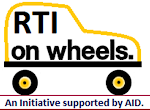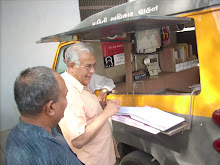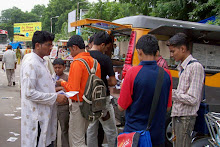The Hans India: New Delhi: Tuesday,
October 04, 2016.
A JNU scholar
Sapna Chaurasiya and Pandit S Khillare School of Environmental science did
research on “Assessment of the concentration, distribution, and health risk of
organochlorine pesticides in Momordica Charantia grown in Periurban region of
Delhi, India” They wrote: “The present study was conducted to evaluate the
concentration levels of different organochloring pesticides (OCPs) in
medicinally important vegetable Momordica charantia in periurban region of
Delhi, India.
There is a
major significance of the study concerning OCP levels in M. charantia vegetable
because it is one of the most grown Cucurbitaceae vegetables in India owning
mainly to its anto-diabetic potential and is reported to accumulate greater
amount of organic pollutants. Vegetables sampling programme was conducted at
two agricultural sites in summer, 2011.
A total of
twenty different OCPs were quantified using has chromatography (GC) assemble
with electron capture detector (ECD). The ∑OCPs concentrations ranged between
25.5 and 84.3 ng/g in the analyzed samples.
The
Concentration of ∑HCH (4.6-55.9 ng/g) was found to be much higher than ∑DDT
(2.0-15.1 ng/g) indicating thereby continued use if HCH in the studied area
even after its ban for agricultural purposes. Percentage distribution of
HCH-isomers showing the pattern: -HCH>∑-HCH>y-HCH in all samples.
However, PP-
DDT contributed highest among three isomers (p,p’-DDT, p,p’-DDD and p,p’-DDE)
at both the sites. Ratio of _/u-HCHC showed value greater than 1.0 for all
samples suggesting the application of technical-HCH in the studied area. ∑HCHC
and heptachlor residues recorded in these vegetables samples exceeded the
maximum residue levels (MRLs) set forth by the European Commission (2009).
However,
non-cancerous health risk calculated via ingestion exposure demonstrated that
hazard quotient (HQ) value was below 1.0 (2.59E-05 to 3.02E-02) for OCPs”.
Challenging
the above prepositions a young woman claiming to be an independent journalist
made following demands, most of which were answered by Mr P S Khillare as
follows:
Q. Date of
beginning and date of completion of the residues analysis narrated in the news
item.
A. Period of
residue analysis: June-July 2011.
Q.
Particulars of technical specification of the instruments used for residue
analysis (including minimum detection limit).
A. Sample
analysis was performed using shimadzu GC 2010 with ECD. Technical specification
of the instruments is available on Shimadzu website.
Q.
Technical grade of various pesticides obtained their purity, source and date of
supply etc. Give photocopy of the purity standard as given by the
supplier.
A. Pesticide
standard mixture EPA 8081, Purity range 98.4-99.9 %, suppliers-sigma Aldrich
Chemicals Pvt. Ltd.
Q. Reading
taken in respect of each sample.
A.
Information cannot be provided as it is related to Ph.D. thesis; the degree is
yet to be awarded.
Q. Limit
of quantification and details of determination thereof.
A.
Information cannot be provided as it is related to Ph.D thesis.
Q. Calibration and related data, including
Linear Calibration Range.
A.
Calibration has been done by external calibration method. Related data cannot
be provided as it is related to Ph.D. thesis
Q.
Confirmatory tests for validating data for each sample.
A.
Confirmatory test was not a mandatory requirement for the research work.
Q. Details of method of analysis of
samples.
A. USEPA
method 8081.
Q. Reading
related to “regent blank” along with chromatograms thereof.
A.
Information cannot be provided as it is related to Ph.D. thesis.
Q. Details
of confirmatory tests done for residues in all samples.
A. Not a
mandatory requirement for the work.
Q. Give copies of chromatograms showing
presence/absences of pesticide residues in all samples analysed.
A.
Information cannot be provided as it is related to Ph.D. thesis.
Q. Give
details of determination of accuracy, precision and sensitivity limit of the
method used.
A.
Information cannot be provided as it is related to Ph D thesis.
Q. Give
the contact addresses of the chemists who analyzed the samples for pesticides
residues.
A. Analysis
was done at the advanced instrumentation Research Facility of the University.
Q. Give
copies of the laboratory log book as maintained during this analysis.
A. Usage
certificate is attached Alleging
‘information’ was not furnished, Appellant filed a complaint before CIC. She
also filed first appeal. PIO and Dean contended questions could not be answered
under the RTI Act.
A large set
of research data has been created by scholar Ms Sapna Chaourasiya for her Ph.D.
work under the supervision of Prof Khillare, and part of the data has been used
for two international peer reviewed research publications. PIO told the
Commission that appellant filed seven RTI applications raising several
questions related to these two publications.
The
researcher has evaluated the concentration levels of different organochloring
pesticides (OCPs) in medicinally important vegetables and analysed their
impact. The university professor, his scholar and research team, in fact, are
educating the people with their research findings against overuse of
pesticides. If this concept reaches people, and properly understood, farmers
might move towards agriculture without harmful pesticides.
How can a
corporate business entity’s representative, claiming to be a journalist, demand
cross-examination-type-questions; is it not abuse of the RTI Act? The
information existing or held by the public authority can be accessed to under
this law.
Definition of
‘information’ under the RTI Act does not include ‘answers’ to such grilling
‘questions. The university and the scholar, who are serving the interests of
the people with the help of infrastructure generated by the tax payers’ money,
have no duty to answer any cross examination on her conclusions either to
manufacturers of pesticides or their agents.
The thesis
was result of research after candidate duly admitted into the programme,
supervised by a professor, partly presented to the committee concerned,
evaluated by experts, besides successfully defended in viva voce and it should
not be subjected to any further scrutiny by anybody.
If research
based criticism is made, there is no defamation. Fair comment is a universally
accepted defence to the charge of defamation and that is part of freedom of
speech and expression. In a similar attempt, the CCFI’s contention of
‘defamation’ was rejected by Hon’ble Delhi High Court in another case against
CCFI.
The pesticide
makers have duty to give information to the farmers and the people in general
who consume the farm produce about how harmful or harmless the usage of
pesticide is. It is called ‘product liability’ and right to information
guaranteed under consumer rights worldwide, more specifically under the
Consumer Protection Act, 1985 in India. They cannot terrorise the researchers
and academic institutions.
The RTI Act
is meant to promote public interest and public-interest-based research. It
cannot encourage the attempt to use the RTI to raise such harassing questions,
frightening the researchers, demoralising the research supervisors and prevent
Jawaharlal Nehru University from its fearless pursuit of independent research.
Universities need to be shielded in public interest from such motivated attacks.
Freedom of
speech is guaranteed to every citizen to express their opinions, studies and
researches or experiments. Even if some of their findings are wrong, it is not
a crime. Anyone is free to come up with correct prepositions. That freedom is
also guaranteed. If the appellant has enough proof, she can also take fund from
the agencies which she is representing and spell out her research products.
Her data also
shall be protected from RTI abusers. The Commission cannot permit such
strategies of misusing the RTI to silence critiques and researchers and
obstructing the academic activities of the Universities such as JNU.
The
Commission recorded its appreciation for the independent research and academic
honesty in responding to certain questions of applicant, though appellant
represented pesticide manufacturers, and recommended scholars to continue their
good job in the interest of nation, food safety and environment.
The
university was also recommended to publish the research work and also to get it
translated into regional languages to explain farmers how the usage of
pesticide is harmful to life and environment. Their research results should
help the community to secure environment and public health.














































































